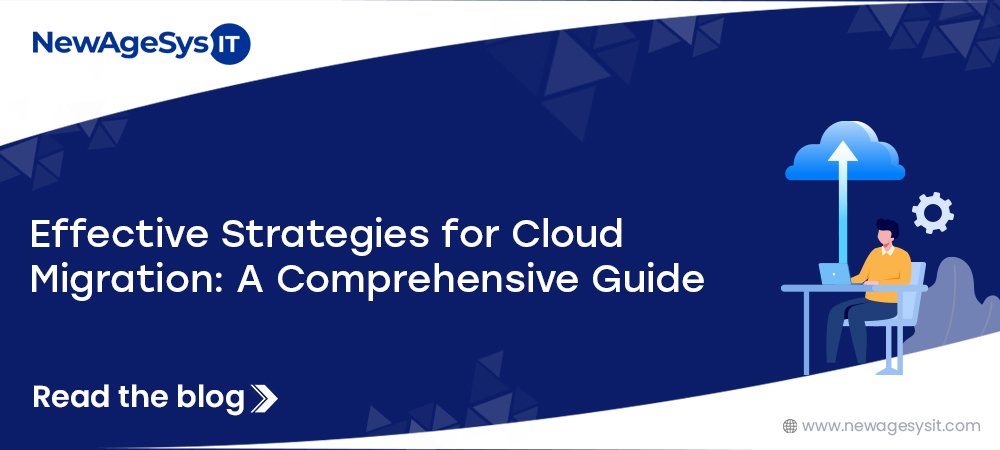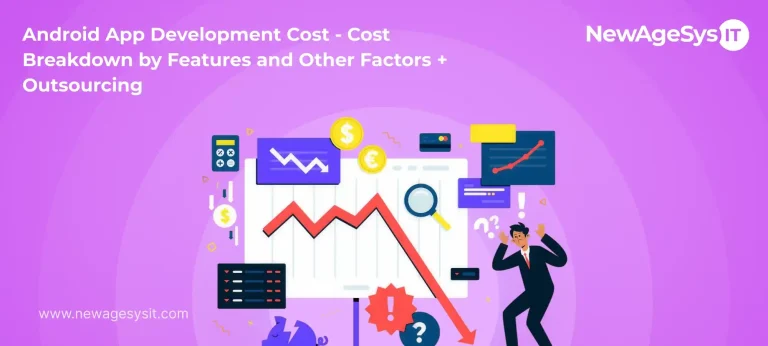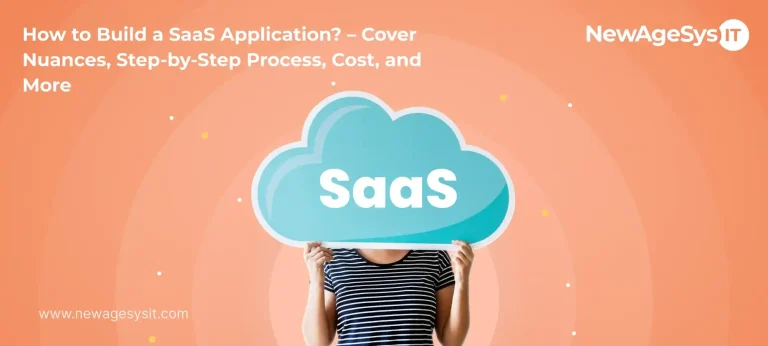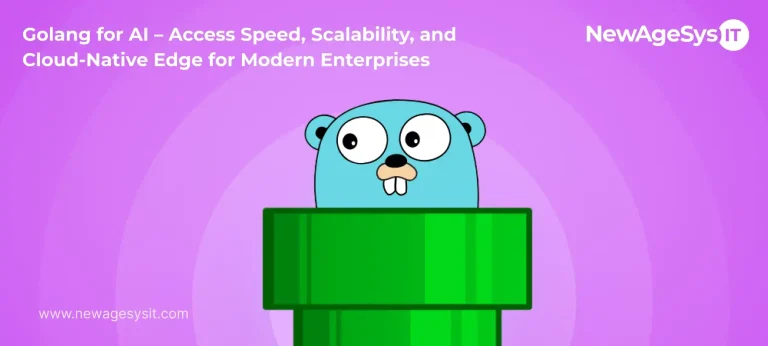Introduction
With cloud computing, companies have found a reliable partner for flexibility, infinite scalability, and operational ease. The rapid pace of innovation is pushing businesses to rethink their strategies, and cloud adoption has become the go-to solution for staying competitive. To make this transition smooth, you need solid planning and a deep grasp of cloud migration strategies.
Organizations must ensure that their migration efforts align with their goals, from reviewing current systems to choosing the right partners. This guide will explain the best practices for cloud migration strategy, helping you transition effortlessly and successfully.
No matter if you’re running a startup out of a garage or a global enterprise, these strategies will let you experience the full power of cloud computing.
What is Cloud Migration?
Migrating to the cloud involves transferring all your digital assets, such as data, apps, and resources, from your current location to a new cloud provider for a better experience. This transformation offers organizations the tools to work smarter, grow faster, and spend less while improving their infrastructure and processes.
Companies can migrate to the cloud in various ways, including rehosting, re-platforming, and refactoring, all tailored to meet unique business needs. Tackling this intricate process often requires businesses to hire cloud consulting service providers with the right resources, knowledge, and strategies. This ensures a seamless migration and stronger digital operations.
What are the 7Rs of Cloud Migration Strategies?
The cloud computing migration process isn’t plug-and-play; it’s a thoughtful process that needs tailored strategies to keep efficiency, costs, and innovation balanced. The 7Rs framework, created by AWS as a more advanced version of Gartner’s original 5Rs, helps organize workloads and choose the best migration strategy.
Businesses can get ahead by using hybrid models and cloud-managed services to update apps, cut expenses, and maximize cloud capabilities.
- Rehost (Lift-and-Shift)
Moving apps to the cloud with minimal tweaks is called rehosting, a great option for fast-tracking legacy system migrations. It’s fast and barely disrupts operations, but it could miss out on powerful cloud-native tools like auto-scaling. If you’re in a rush or don’t have much cloud know-how, this strategy fits the bill.
- Replatform (Lift-Tinker-and-Shift)
Moving to a new platform brings small but impactful upgrades, like implementing Amazon RDS, that enhance performance without the need for a complete redesign. Combining cost savings with cloud efficiency, it’s great for slow-and-steady modernization. Mismanagement here could easily snowball into a full-blown refactoring session.
- Repurchase (Drop-and-Shop)
Instead of sticking with outdated systems, this method brings in SaaS solutions such as Salesforce or Workday to lower maintenance hassles and embrace subscription-based models. You get the latest tools in no time, but the downside is being stuck with one provider and the hassle of learning new systems.
- Refactor (Re-Architect)
With refactoring, apps are reconstructed into modern cloud-native systems like microservices or serverless to enhance flexibility and innovation. While it requires significant resources upfront, it delivers lasting flexibility and cost efficiency, especially for large, outdated systems seeking modern enhancements.
- Retire
Removing outdated applications clears the clutter, cuts costs, and enhances protection against threats. You need to think things through to avoid disrupting linked systems, but doing so sharpens the focus on IT portfolio updates.
- Retain
Some systems work better staying on-site, especially when compliance rules, quick responses, or specific dependencies come into play. With a hybrid approach, you can transition at your own pace without losing track of key assets.
- Relocate (Hypervisor-Level Shift)
Migrating VMware environments to cloud services like AWS EC2 works smoothly, without any code modifications. It cuts back on downtime but might overlook cloud optimizations, acting as a stepping stone toward a more seamless integration.
Cloud Migration Best Practices to Follow
Migrating from on-premises setups to cloud technology is a big leap, and without careful execution, things can go south fast. Cloud migration isn’t just about moving data—it requires evaluating workloads, identifying dependencies, planning the transition, selecting a trusted provider, securing data, optimizing apps, and staying within compliance rules.
With a variety of cloud migration strategies available, businesses can create a plan that fits their structure. It ensures a transition that feels natural and efficient.
Assess and Prioritize Workloads
- Review the existing IT framework, making sure apps, data, and services are up to the task and running smoothly.
- Decide which workloads are worth migrating by checking how complicated they are, what other systems they depend on, and how much they contribute to the company’s success.
- Lay the groundwork by optimizing minor tasks before shifting major responsibilities.
- Take advantage of cloud assessment tools and readiness frameworks to simplify your cloud transition.
- Keep track of how everything connects by using a Configuration Management Database (CMDB) to spot hidden risks before they cause trouble.
- Carefully break down the process to ensure your cloud move is smooth, efficient, and well-planned.
Create Dependency Mapping
- A must-have insight into how applications, servers, and IT tools depend on each other to keep everything running smoothly.
- Helps keep migration risks under control when dealing with connected applications.
- Ensures the migration goes off without a hitch, avoiding any unexpected roadblocks.
- A network of interconnected apps, grouped logically according to how they depend on one another.
- Organizes the migration process step by step, making sure everything connects smoothly without issues.
- Prevents major slowdowns during migration and safeguards against problems with app compatibility.
- Smartly distributes resources to keep the migration smooth and makes testing and validation easier in the final phases.
Develop a Comprehensive Migration Plan
- Build a well-thought-out roadmap for shifting to the cloud, clearly defining important milestones, resource allocations, and ways to tackle risks before they happen.
- A comprehensive cloud migration strategy best practice makes sure your business stays up and running by following compliance rules and having a solid backup plan for emergencies.
- Make sure IT teams, app owners, and security specialists are involved from the jump to keep your migration seamless while ticking off compliance and security must-haves.
- Build a cloud system that works hand-in-hand with the company’s IT strategy, balancing speed, expansion, and smart spending.
- Know what you want from your migration, keep an eye on key performance markers, and adjust along the way to ensure your cloud shift delivers top-notch results.
Choose the Appropriate Cloud Provider
- A solid cloud provider should have a strong past, stable finances, and happy customers—check all three before you commit.
- Make sure the provider offers exactly what your business needs—whether it’s the right tech, custom solutions, or meeting all the necessary rules and regulations.
- Make sure the provider’s services fit smoothly into your current setup while keeping security, certifications, and legal requirements top of mind.
- Pick a provider who answers when you need help and doesn’t play hide-and-seek with their pricing. Your business goals will thank you later.
Implement Robust Security Measures
- No one wants a security nightmare when shifting to the cloud. That’s why businesses must encrypt everything, lock down access, and follow regulations to the dot.
- It’s all about staying ahead of threats—regular security checks fix vulnerabilities, while trained employees and a solid incident response plan keep the whole team ready for the unexpected.
- Integrating security at every phase of cloud migration is like reinforcing a bridge before crossing—it ensures a safe and disaster-free journey.
Optimize Applications for the Cloud
- Cloud application development services make sure your apps don’t just land in the cloud but thrive there, scaling effortlessly, running smoother, and adapting like pros.
- After shifting to the cloud, applications should either be redesigned or optimized to maximize the benefits of cloud-native tools.
- Figure out what success looks like for your app, track those numbers, and make sure everything runs smoothly.
- Keep your app running fast and smooth by using auto-scaling, advanced monitoring, and smart traffic management.
- Keep things running smoothly by regularly checking progress, listening to feedback, and making updates to stay on track with company goals.
Establish Ongoing Monitoring and Compliance
- Keeping a close eye on the post-cloud computing migration process is key to ensuring that everything runs smoothly and stays secure.
- Businesses need to monitor important performance metrics and set clear goals to assess their performance.
- Monitoring tools keep teams in the loop about potential problems, making sure they can fix things before they escalate.
- Even after the migration is done, you still have to follow industry rules and standards—no skipping out on that.
- The best way to stay ahead of security threats? Keep testing, refining, and upgrading your strategies.
Why is NewAgeSysIT Your Ideal Cloud Migration Partner?
With a wealth of experience and a suite of powerful services, NewAgeSysIT makes cloud migration feel less like a hassle and more like an upgrade. With a strong foundation in tech, NewAgeSysIT creates cloud solutions that scale efficiently, adapt to any device, and align seamlessly with your business goals.
Our solutions remove the growing pains of digital transformation, giving businesses a straight path to cloud success. Let NewAgeSysIT handle your cloud migration with ease, seamlessly integrating your software, processes, and data into platforms like AWS. With AWS cloud services, businesses can easily adjust to new challenges, scale up when needed, and enjoy a hassle-free move to the cloud.
Conclusion…
Getting your cloud migration right is crucial if you want your business to keep up with the digital curve. With a careful readiness check, a strategic migration approach, and smart use of technology, companies can make their cloud journey smooth, efficient, and budget-friendly.
For an app development company, staying ahead means more than just avoiding downtime. It’s about using cloud technology to build innovative apps and give customers an experience they won’t forget.
Jumping into the cloud game now sets businesses up for long-term wins and fresh ideas in our hyper-connected world. Need more info? Our team is just a call or click away!



















